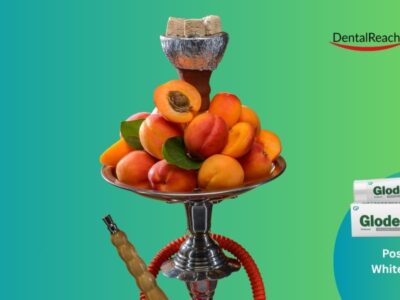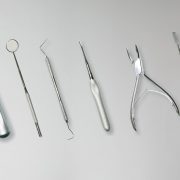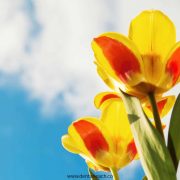Dr. Amrita Das , MDS (Periodontology and Implantology), PhD Scholar
Complementary and Alternative Medicine (CAM) refers to a broad range of healthcare practices that fall outside the scope of conventional Western medicine. CAM includes non-conventional methods used alongside (complimentary) or instead of (alternative) mainstream dental treatments.
In dentistry, CAM involves using non-conventional methods to prevent, diagnose, manage, or treat oral and dental conditions, often with an emphasis on natural, holistic healing. In dentistry, it is a growing area of research, especially designed to patient interests in natural and holistic approaches.
Complementary medicine is used in conjunction with standard dental treatments. Alternative medicine is used instead of traditional approaches (less common and more controversial).
There are some key CAM modalities in dentistry:
Herbal Medicines And Phytotherapy
Use of herbal extracts (neem, clove, turmeric, miswak, aloe vera, tea tree oil) etc in :-
- Antibacterial mouthwashes
- Herbal antimicrobial mouthwashes are gaining popularity in Complimentary dental medicine. Common ingredients include
- Neem, tea tree oil ,clove ,green tea extract ,aloe vera etc . These may have antimicrobial , anti inflammatory and anti oxidant properties ,but more robust clinical studies are needed for many of them.
- Periodontal therapy
For periodontal therapy , antimicrobial therapy includes:
- Herbal agents offering anti inflammatory, antimicrobial, antioxidant and healing properties making them useful for managing gingivitis, periodontitis and oral mucosal conditions.
- It helps in reducing plaque, bleeding gums and halitosis
- Alcohol free and suitable for sensitive users
- Topical gels and pastes like turmeric or aloe vera gels applied to gingiva reduce inflammation
- Effective in post scaling applications.
- Traditional yet evidence based
- Use of herbal toothpastes
- Caries prevention
Mechanism of CAM in caries prevention is:
- It reduces bacterial load with herbal rinses oil probiotics
- Inhibits acid production by green tea and xylitol
- Enhances remineralization by nutrients and herbal formulas
- Promotes saliva flow by xylitol ,chewing gums
- Maintains oral ph by alkaline herbs and dietary changes
- Oral ulcer management
- Post extraction healing
Ayurveda In Dentistry
Ayurvedic treatments such as oil pulling , triphala and herbal dentifrices used for enhancing oral health.
- Oil Pulling
Oil pulling is an ancient Ayurvedic practice known as “Kavala” or “Gandusha.” It involves swishing oil in the mouth for a period of time to promote oral and systemic health.
Common oils used:
- Sesame oil (traditionally preferred in Ayurveda)
- Coconut oil (popular in modern practice for its antimicrobial properties)
- Sunflower oil
Mechanism of CAM:
- Draw out toxins (“ama”) from the body.
- Strengthen teeth and gums.
- Improve oral health and freshen breath.
- Promote systemic health by reducing the body’s toxic load
Scientific Perspective and Evidence
While oil pulling is not widely accepted as a substitute for brushing and flossing, some scientific studies (small-scale and limited) suggest:
- Reduction in plaque and gingivitis
- Decrease in Streptococcus mutans, a bacteria linked to cavities
- Improvement in bad breath (halitosis)
However, more large-scale and rigorous clinical trials are needed for conclusive evidence
- Triphala
Triphala is a traditional Ayurvedic herbal formulation made from three dried fruits:
- Amalaki (Emblica officinalis) – rich in vitamin C, supports immunity and digestion
- Bibhitaki (Terminalia bellirica) – detoxifying, supports respiratory health
- Haritaki (Terminalia chebula) – promotes digestion and elimination
In Ayurveda, Triphala is considered a rasayana (rejuvenative tonic) that balances the three doshas: Vata, Pitta, and Kapha.
Mechanism of CAM
In the CAM framework, Triphala falls under Biologically-Based Practices – use of herbs, vitamins, and other natural products. It is often used as complementary therapy, especially in digestive, metabolic, and detox protocols.
According to Ayurveda, Triphala
- Aids digestion and elimination
- Acts as a mild detoxifier and laxative
- Supports eye health, skin health, and overall rejuvenation
- Balances gut microbiota, improves Agni (digestive fire)
- Herbal dentifrices
Herbal dentifrices are toothpastes or tooth-cleaning powders made primarily from natural plant-based ingredients, such as:
- Neem (Azadirachta indica) – antibacterial, anti-inflammatory
- Clove (Syzygium aromaticum) – analgesic, antimicrobial
- Triphala – antioxidant, plaque control
- Licorice (Glycyrrhiza glabra) – anti-inflammatory, anticaries
- Babul (Acacia arabica) – astringent, gum health
- Tulsi (Ocimum sanctum) – antibacterial and antifungal
- Miswak (Salvadora persica) – traditional natural toothbrush plant
Herbal dentifrices are often used as complementary treatments alongside conventional oral hygiene practices such as fluoride toothpaste and mechanical brushing.
In Ayurveda, oral health is closely tied to overall health. Herbal formulations are used to:
- Strengthen gums
- Prevent plaque and tartar
- Reduce inflammation (gingivitis)
- Combat halitosis (bad breath)
- Balance the oral microbiome
Traditional systems (Ayurveda, Unani, Siddha) emphasize regular use of natural substances to maintain oral and systemic health.
Homeopathy In Dentistry
Often used for
- Dental anxiety
Various remedies such as Acnitum napellus, Gelsium sempervirens, argentum nitricum, Chamomilla , Arsenicum album, phosphorous, lycopodium clavatum, silicea are various remedies to prevent dental anxiety.
- Dosage: will be typically 6C Or 30C potency taken 1-3 times before the dental visit ,depending on severity
- Form : Small pellets placed under the tongue ,also available in liquid or tablet form
- Timings: best taken at the onset of anxiety or the night before or morning of the dental appointment
Always consult a qualified homeopath for individualized treatment.
- Post surgical pain / swelling
Arnica montana, hypericum perforatum, ruta graveolans, belladonna, phosphorous, staphysagria, ledum palustre, calendula officinalis are various remedies for the post surgical pain /swelling
General dosing guidelines
- Potency -6C, 30C Or 200C depending on case severity and patient sensitivity
- Acute pain/swelling – every 2-4 hours reduces as symptoms improve
- Mild/moderate – 2-3 times daily for 2-3 days post surgery .
- Form – small pellets under the tongue liquid dilutions or topical
- Apthous ulcers
Herbal rinses, aloe vera gel, dietary therapy, probiotics, stress management are various CAM integrations with other approaches .
Remedies like Borax veneta, Mercurius solubilis, Natrum muriaticum, Nitric acid, Kali bichromicum etc are various remedies for apthous ulcers approaches as for CAM.
- Teething in children
CAM modalities for teething in children as per homeopathy approach are Chamomila ,Belladonna , Calcarea phosphorica as for pain relief and calming effect
While teething is not an illness, many parents seek CAM approach for gentle, non invasive and natural remedy to ease their child’s discomfort for this long lasting condition instead of synthetic medications.
Accupuncture/Accupressure In Dentistry
Acupuncture is a traditional Chinese medicine technique that involves the insertion of thin, sterile needles into specific acu-points on the body to balance energy flow Qi, stimulates nerves and modulates pain responses.
Used for:
- Managing temporomandibular disorders (TMD):
Common acupuncture points for TMDs are ST6, ST7,LI4, GB20, SI18 and Ashi points.
Treatment may also involve distal points eg on hands and feet to balance the body’s energy and promote healing.
Benefits of acupuncture for TMDs are:
- Pain reduction
- reduced muscle tension
- fewer headaches
- improved jaw mobility
- stress relief
- Orofacial pain
Common points for orofacial pain are :- ST6, ST7, LI4, SI18, GB20, Yintang ,Taiyang
Integration with other CAM therapies is more effective for orofacial pain such as: herbal medicines, massage therapy, homeopathy, biofeedback /mindfulness, chiropractice or osteopathy.
- Trismus
Trismus is a condition characterized by limited mouth opening caused by muscle spasm, TMJ dysfunction, radiation therapy, OSMF ,bruxism and psychological stress
Common points used in acupuncture are :- ST6, ST7, LI4, GB20, Ashi points
- Gag Reflex
Acupressure (pressure with fingers instead of needles) can be easily applied chairside in dental settings.
Acupuncture points such as PC6, CV24, GV26, LI4, ST36 are various acupuncture points for curing gag reflex.
Aromatherapy In Dentistry
It is a technique that uses essential oils extracted from plants to promote physical, emotional and psychological well being. These oils, generally lavender or peppermint oil, can be inhaled, diffused, or applied topically (diluted) ,and are used to support the body’s natural healing processes.
Use of essential oils:
- It helps in stress and anxiety relief in patients
- Used in CAM for dental anxiety ,surgical preparation or general relaxation
- Lavender, chamomile, ylang-ylang and bergamot help calm the nervous system
- Creating calming clinical environments
Mind Body Techniques
Includes
- meditation
- yoga
- breathing techniques
These practices aim to create balance between mind, body and breath, promoting healing from within and supporting overall health – physically ,emotionally, and psychologically.
- Dental anxiety
Helps in stress management, pain control, anxiety reduction, improved immune function, better tolerance of procedures
- Chronic facial pain
Helps in reducing chronic pain, bruxism, sleep and healing, TMJ disorders.
Emerging Research Directions
- Nano herbal formulations for improved delivery and bioavailability
- Combining herbal agents with conventional therapies to reduce side effects
- Patient satisfaction and acceptability of CAM in dental clinics
Why CAM in Dentistry?
- Rising interest in natural and holistic health.
- Patients seek minimally invasive and side-effect-free options.
- CAM offers new avenues for managing chronic conditions, pain, infections, and dental anxiety
Benefits of CAM in Dentistry
- Natural approach -Uses herbs and therapies with fewer synthetic chemicals
- Cost-effective -Many CAM methods are inexpensive
- Holistic care-Treats the whole patient, not just symptoms
- Patient-centered – Offers more options and autonomy for patients
- Few side effects – When used properly, herbal agents often have low toxicity
Challenges of CAM in Dentistry
- Lack of standardization – Herbal product concentration and purity can vary
- Limited clinical trials – Fewer high-quality RCTs in dental CAM
- Regulatory issues – Not all CAM agents are approved or well-regulated
- Risk of interaction – CAM may interact with conventional medications
- Skepticism – Some dental professionals are hesitant to adopt CAM
Conclusion
CAM in dentistry is an emerging field with potential to complement standard care, especially in managing pain, inflammation, infection, and anxiety. However, rigorous research, clinical validation, and regulatory guidelines are essential for safe integration into dental practice.




















Comments